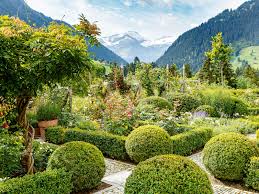Exploring the Beauty and Functionality of Landscape Architecture

The Art of Landscape Architecture
Landscape architecture is a field that combines art, science, and environmental stewardship to create outdoor spaces that are not only aesthetically pleasing but also functional and sustainable. It involves the design, planning, and management of outdoor environments, including parks, gardens, residential areas, campuses, and more.
Landscape architects work to enhance the natural beauty of a site while considering factors such as climate, topography, soil conditions, and human needs. They use their expertise to create outdoor spaces that promote health and well-being, encourage social interaction, and support biodiversity.
One of the key principles of landscape architecture is sustainability. Landscape architects strive to design landscapes that are environmentally responsible and resource-efficient. They may incorporate elements such as native plants, rain gardens, green roofs, and permeable paving to reduce water consumption, improve air quality, and mitigate the effects of climate change.
Another important aspect of landscape architecture is the integration of art and design into the natural environment. Landscape architects use elements such as hardscape materials, plantings, lighting, and water features to create visually stunning landscapes that evoke emotions and inspire awe.
Whether it’s a public park that provides a respite from urban life or a private garden that serves as a retreat for homeowners, landscape architecture plays a crucial role in shaping our outdoor spaces. By blending creativity with technical expertise and environmental awareness, landscape architects continue to transform our world one beautiful landscape at a time.
Top 5 Frequently Asked Questions About Landscape Architecture
- What is landscape architecture?
- What does a landscape architect do?
- How is landscape architecture different from landscaping?
- Why is sustainability important in landscape architecture?
- How can I pursue a career in landscape architecture?
What is landscape architecture?
Landscape architecture is a multidisciplinary field that encompasses the art, science, and practice of designing outdoor environments to create functional, aesthetically pleasing, and sustainable spaces. It involves the thoughtful consideration of natural elements, such as landforms, vegetation, water bodies, and climate, as well as human-made structures and amenities. Landscape architects work to enhance the beauty and functionality of outdoor spaces while addressing environmental concerns and promoting the well-being of communities. Through their expertise in design, planning, and management, landscape architects play a vital role in shaping our built environment and creating harmonious interactions between people and nature.
What does a landscape architect do?
A landscape architect is a professional who designs outdoor spaces, blending art, science, and environmental considerations to create functional and aesthetically pleasing landscapes. They work on a variety of projects, such as parks, residential areas, campuses, and commercial developments. Landscape architects collaborate with clients to understand their needs and preferences, conduct site analysis to assess environmental factors like topography and soil conditions, and create detailed plans that incorporate elements like plantings, hardscape materials, lighting, and water features. They also consider sustainability principles to ensure that the landscapes they design are environmentally responsible and resource-efficient. Overall, a landscape architect plays a crucial role in shaping outdoor environments that promote health, well-being, and connection with nature.
How is landscape architecture different from landscaping?
Landscape architecture and landscaping are often confused, but they serve distinct purposes. Landscape architecture involves the design and planning of outdoor spaces on a larger scale, considering factors such as environmental sustainability, functionality, and aesthetics. Landscape architects work with architects, engineers, and urban planners to create comprehensive designs for parks, campuses, residential developments, and other outdoor environments. On the other hand, landscaping focuses more on the implementation and maintenance of these designs, including tasks like planting trees and shrubs, installing irrigation systems, and creating outdoor living areas. While both landscape architects and landscapers contribute to enhancing outdoor spaces, landscape architecture involves a higher level of planning and design expertise to create cohesive and sustainable landscapes that meet the needs of both people and the environment.
Why is sustainability important in landscape architecture?
Sustainability is a crucial consideration in landscape architecture because it ensures that outdoor spaces are designed and managed in a way that minimizes negative impacts on the environment while promoting long-term ecological health. By incorporating sustainable practices such as using native plants, conserving water, reducing energy consumption, and enhancing biodiversity, landscape architects can create landscapes that not only function efficiently but also contribute to the overall well-being of the ecosystem. Sustainable landscape design not only helps mitigate the effects of climate change but also fosters resilience and adaptability in the face of environmental challenges, ultimately leading to healthier and more vibrant outdoor environments for both present and future generations to enjoy.
How can I pursue a career in landscape architecture?
To pursue a career in landscape architecture, individuals typically need to earn a bachelor’s or master’s degree in landscape architecture from an accredited program. These programs cover design principles, plant biology, environmental science, and construction techniques. Gaining practical experience through internships or entry-level positions at landscape architecture firms is also beneficial. Additionally, obtaining licensure by passing the Landscape Architect Registration Examination (LARE) is often required to practice professionally. Building a strong portfolio showcasing design projects and collaborating with professionals in the field can help aspiring landscape architects establish themselves in this rewarding and creative career path.
